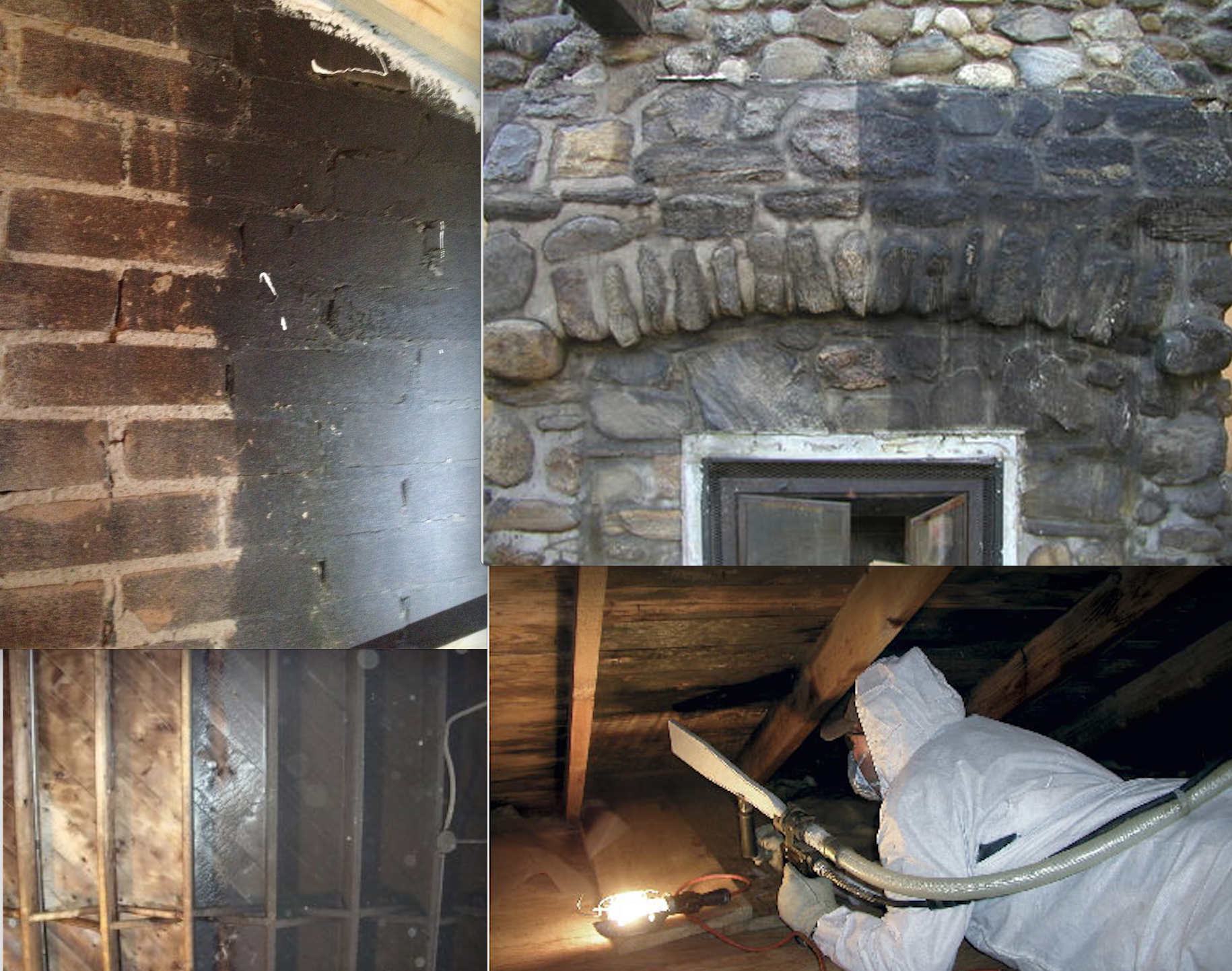Mold
Recommended Methods:
Dry Ice Blasting
Dry ice is fantastically cold (-110 deg F). Therefore, it kills most all living organisms upon contact. Mold spores are no exception. First thing’s first with mold removal… First thing you’ll have to do is eliminate the source of the water. In some cases this may simply mean stopping the leak. In some not so obvious circumstances it may mean determining whether areas where ‘hot meets cold’ have adequate insulation separating the two spaces, or also if there is adequate air movement within the affected space. Now you can begin getting rid of the mold.
LARGE SCALE MOLD PROJECTS
This is where the greatest value is found in EcoJet Dry Ice Blasting services. Anytime you have more than 200 sf of area to clean, especially areas with complex geometries such as attics and floor joists you’re gonna wanna give us a call. We can access spaces where no hand or tool can reach. Like the spaces in between roof rafters and sheathing, and spaces above HVAC trunks in basements. The benefits beyond this however, is the speed and efficiency you get with dry ice blasting. Why only kill some of the mold, when you can kill all of it?
For some of you with smaller sized applications, it will make better financial sense to use enzymatic cleaners. Enzymatic cleaners are derived from nature therefore are very safe for the environment.
ATTICS
It’s always recommended that you remove all the insulation from the attic space as the insulation will trap the mold spores we remove which may make the spores airborne when disturbed in the future. After the blast process, a thorough vacuuming of the attic space with a vacuum equipped with a good HEPA filter.
SAFETY FIRST
It’s in your best interest to invest in a face mask and other protective gear. The last thing you want to do is breathe in mold. A surgical mask, or the type used by carpenters to keep from inhaling saw dust, works well for this task. A long sleeved shirt and long pants should complete the protective outfit. Even the best protective gear is no guarantee that you are safe from the toxins associated with traditional mold removal so be careful! Chlorine is commonly, and dangerously used for mold clean-up. It is not recommended. Chlorine bleaches away the mold stain, but the mold always comes back. It wasn’t fully removed from the surface.
Fire
Recommended Methods:
Dry Ice Blasting
Soda Blasting
Remove char and soot down to good wood! Do this without contaminating unaffected areas of the building. Spray painting after blasting with a shellac primer is always a good way to trap odours left behind by smoke damage. After the blast process, a thorough vacuuming of the attic space with a vacuum equipped with a good HEPA filter. Ask us about a full service package.

Further Reading:
Case Study: Mold (PDF)
(PDF)
